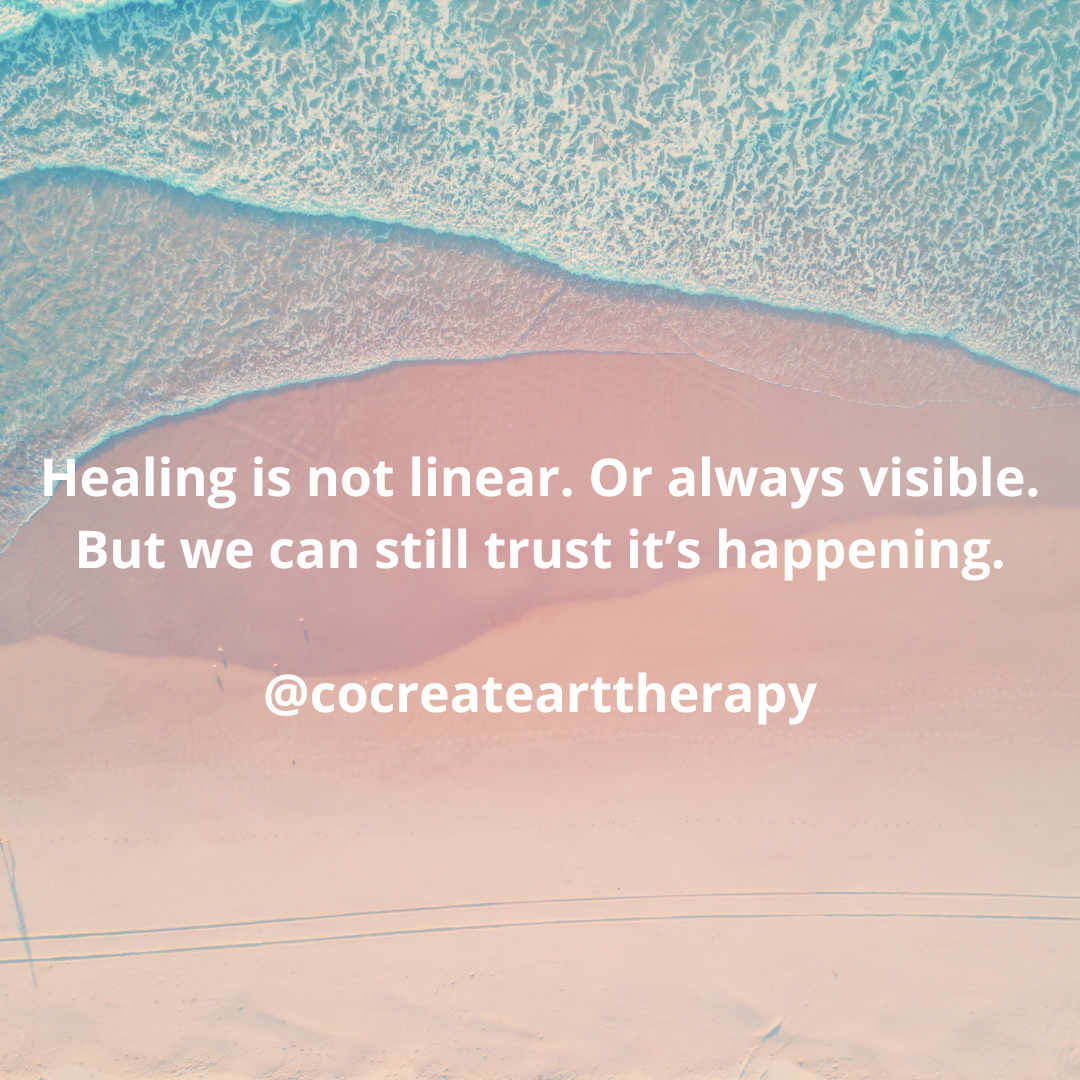|
Doctors are now “prescribing” activities such as museum visits, nature walks, volunteering, book clubs, and expressive arts practices as a more holistic approach to wellness. In the UK and some parts of the US, “social prescribing” has become integrated into medical practices to combat isolation, loneliness, and somatic responses to stress. These symptoms are often exacerbated for those in helping/caregiving professions due to burnout syndrome and a kind of desensitization that can develop as a way to cope with chronic exposure to high levels of stress and demand.
A recent Harvard Public Health newsletter quotes a London-based physician named Giurca who champions this model of care: “Instead of a health care model based entirely on pills and procedures, where doctors ask patients, ‘what is the matter with you,’ this concept makes a paradigm shift to asking ‘what matters to you.’” This person-centered approach is highlighted in the HHArt of Medicine program via NYC Health and Hospitals and the Whitney Museum of American Art, which fosters the emotional well-being of its staff to promote healing and wellness for patients, families, and caregivers. Since countless studies reflect how expressive arts engagement can improve mental health outcomes, The Arts in Medicine department utilizes visual, literary and performing arts programming throughout the Health + Hospitals system. Yesterday’s Art-Centered Practice workshop invited hospital staff members from various departments to engage in mindful observation of a mural installation on the first floor by abstract painter Helen Frankenthaler, followed by an open studio process approach to art-making and reflective writing as a form of self care. One participant shared how she had neck pain at the beginning of the session, and has been struggling with a number of personal health issues. While experimenting with the wet media inspired by the mural downstairs, she realized that it only took one stroke of a paint stick to fill her entire page with color if she also added water. The resulting image was bursting with warmth, and evoked feelings of “wholeness” for her. By the end of the session, her neck pain was gone. Her creative process had reminded her of her own personal resourcefulness and resilience, which she felt on a physical and emotional level. Post by Sharon Itkoff Nacache ATR-BC LCAT LPAT PMH-C Workshop Photos courtesy of Titus Rawle
0 Comments
Healing is not linear. Or always visible. But we can still trust it’s happening. This is especially true when we are living in an Age of Anxiety, when public health and environmental variables compound everyday stressors and push our cortisol levels to new heights. In the northeast US, last week’s smokey skies and corresponding lockdown likely triggered some lingering pandemic PTSD, especially for frontline workers or pandemic parents who were finally starting to exhale after years of white knuckling through public health alerts.
Ecological anxiety rooted in concern about climate change is well warranted, but it is also easy to get swept up into cognitive distortions around a projected dystopian future for our children when it looks like we’re living on planet Mars. Whether we’d like to admit it or not, we are highly sensitive beings, heavily influenced by both our internal and external worlds. So, how do we take a deep breath, relax, and trust everything will be ok when the air we breathe is not necessarily safe anymore? When we need to dig deep and turn inward for strength, our own imaginations are rich terrain to cultivate grounding, mindful practices. When my mind starts to dwell in dark caves of fear or unknowns, I like to transport myself into calming, sensory scenes with ocean waves lapping against the shore, water trickling over smooth stones in a clear, cool stream, or leaves lazily dancing in a breeze. I find solace in the way nature’s cycles silently and steadily carry on with the passing of time. Indeed, after two days of hazy skies here in NYC, the winds dutifully cleared out the smog, allowing the summer sun to peek through again. But those dark days offered an eerie reminder of pressing ecological issues we can no longer ignore, as well as our own vulnerability as humans. It takes a certain level of trust, in oneself and the world at large, to learn to take comfort in the transience of all things, the constant movement of time, the fact that everything eventually passes. A similar outlook leads to better outcomes in therapy, too. Managing expectations around what growth will look or FEEL like in therapy is so important when one is really in the nitty gritty of the work. We all want the magic formula to instantly feel better and the gratification or public recognition of our measurable progress. But in reality, engaging in an ongoing therapeutic relationship is a highly individualized, private process. Often only the therapist and clients bear witness to positive personal change–regardless of how big or small– with hopes that this will translate outside of session. It can feel different session to session, sometimes like “two steps forward, one step back,” or a “”progression/regression” scenario, where there may be a personal breakthrough one week, followed by exacerbated symptoms or an increase in triggers the next. Yet this is still healing. Regardless of whether one is engaged in ongoing therapy due to physiological, spiritual, sexual, psychosocial, or emotional concerns, the journey is a hard, but noble one. We all need to remember to breathe as we continue to navigate this ever-changing world–together and on our own. Post by Sharon Itkoff Nacache ATR-BC LCAT LPAT PMH-C Original Photo by Patrick Ryan via Unsplash |




 RSS Feed
RSS Feed